
Best Hiking Trails in Morocco for Nature Lovers
From snow-capped mountain peaks to sun-drenched desert dunes, Morocco offers one of the most diverse landscapes in North Africa making it a paradise for hikers and nature lovers alike. Whether you’re an experienced trekker looking to summit towering peaks or a casual walker seeking scenic trails through forests and coastal cliffs, Morocco’s hiking routes promise unforgettable experiences across its varied terrains.
With the majestic Atlas Mountains, the lush Rif range, cedar-filled valleys of the Middle Atlas, and even hikes through remote desert and coastal regions, Morocco caters to every level of adventurer. Beyond the breathtaking scenery, the trails also offer unique encounters with Berber culture, traditional villages, and local wildlife.
In this guide, we’ll explore some of the best hiking trails in Morocco from challenging alpine climbs to gentle nature walks each chosen for its beauty, biodiversity, and cultural richness. Lace up your boots and get ready to discover Morocco on foot.
1. Mount Toubkal (Jebel Toubkal)
As the highest peak in North Africa at 4,167 meters (13,671 feet), Mount Toubkal is the crown jewel of Moroccan trekking. The most popular route begins in the village of Imlil, just 90 minutes from Marrakech, and typically takes two days with an overnight stay at a mountain refuge. The trail climbs through rocky terrain and passes through traditional Berber hamlets, offering panoramic views of the Atlas range.
- Difficulty: Challenging
- Best Time to Visit: April to October (or winter ascents with proper gear)
- Highlights: Sunrise summit, sweeping views, and cultural immersion in Berber communities
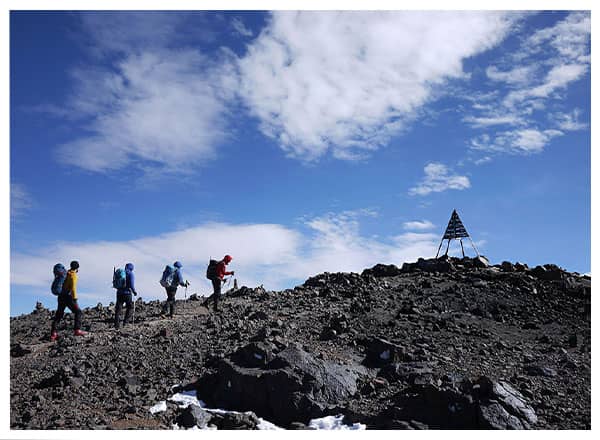
2. Aït Bouguemez (The Happy Valley)
Nicknamed “The Happy Valley” for its warm hospitality and stunning scenery, Aït Bouguemez is a lush, terraced valley surrounded by gentle mountain slopes. This area is perfect for relaxed multi-day treks through peaceful villages and agricultural fields. It’s an ideal destination for hikers seeking cultural discovery rather than high-altitude extremes.
- Difficulty: Easy to moderate
- Best Time to Visit: Spring and autumn
- Highlights: Authentic Berber life, fertile valley views, and seasonal festivals
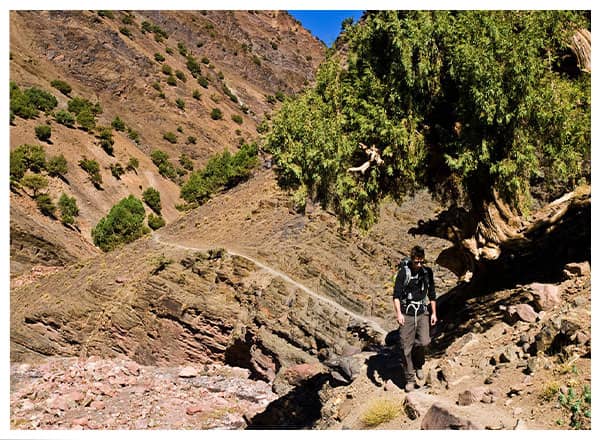
3. Mgoun Massif (Jebel M’Goun)
For those looking to escape the more popular Toubkal trail, the Mgoun Massif offers a wild, lesser-traveled adventure. At 4,071 meters, Mount Mgoun is Morocco’s second-highest peak. Treks here often involve crossing remote plateaus, dramatic gorges, and ancient transhumance paths used by nomadic herders.
- Difficulty: Moderate to difficult
- Best Time to Visit: May to October
- Highlights: Untouched nature, wild canyons, and a sense of solitude far from tourist routes
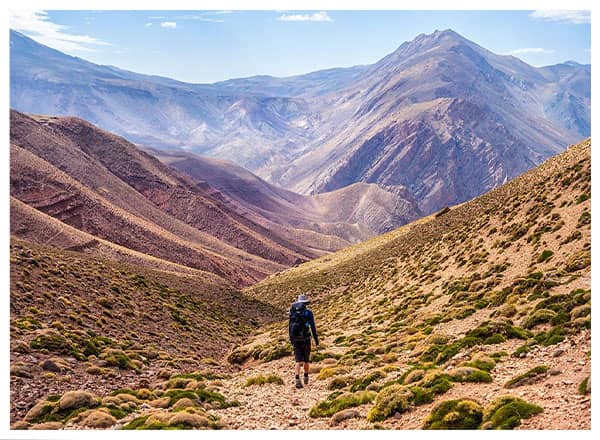
4. Talassemtane National Park
Just outside the blue-hued town of Chefchaouen lies Talassemtane National Park, a biodiversity hotspot and a hiking paradise. The park is filled with cedar and fir forests, dramatic gorges, and serene rivers. One of the most popular hikes is to the Akchour Waterfalls and the Bridge of God, a natural rock arch spanning a dramatic canyon.
- Difficulty: Easy to moderate
- Best Time to Visit: March to June and September to November
- Highlights: Waterfalls, wildlife (Barbary macaques), and accessible trails close to town
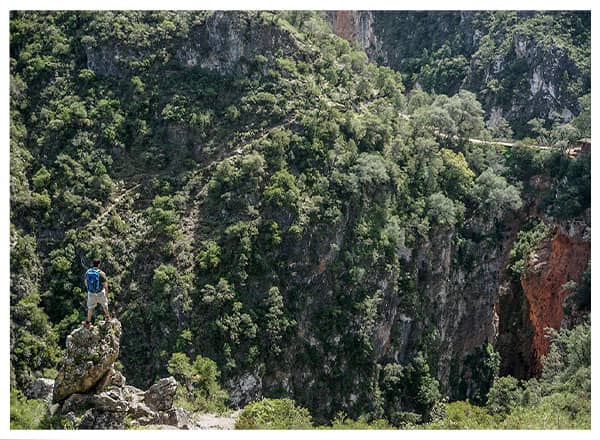
5. Jebel El-Kelaa
This lesser-known mountain offers stunning views over the Mediterranean Sea and the surrounding Rif peaks. Starting near Chefchaouen, the trail to Jebel El-Kelaa is a more challenging climb but rewards hikers with a quiet, panoramic summit experience. On clear days, you can see all the way to Spain.
- Difficulty: Moderate to challenging
- Best Time to Visit: Spring and autumn
- Highlights: Panoramic vistas, wildflowers, and relative solitude
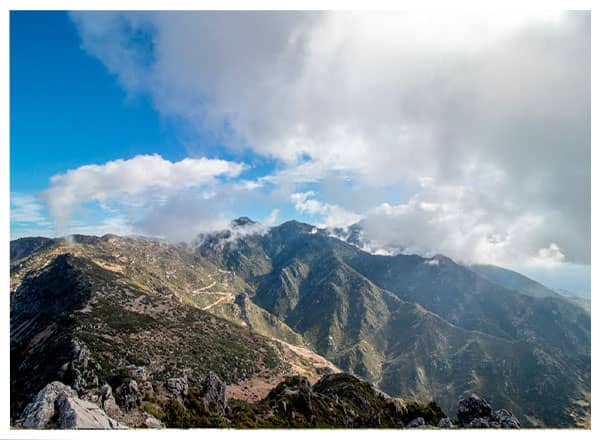
6. Ifrane National Park
One of Morocco’s most accessible and family-friendly hiking destinations, Ifrane National Park is home to vast cedar forests and the endangered Barbary macaque. Trails in the park are mostly flat or gently sloping, ideal for nature walks and picnics. In the winter, the area even sees snow, transforming into a playground for snowshoe hikes and cross-country skiing.
- Difficulty: Easy
- Best Time to Visit: Year-round (especially beautiful in spring and autumn)
- Highlights: Ancient cedar trees, wildlife, and cool climate
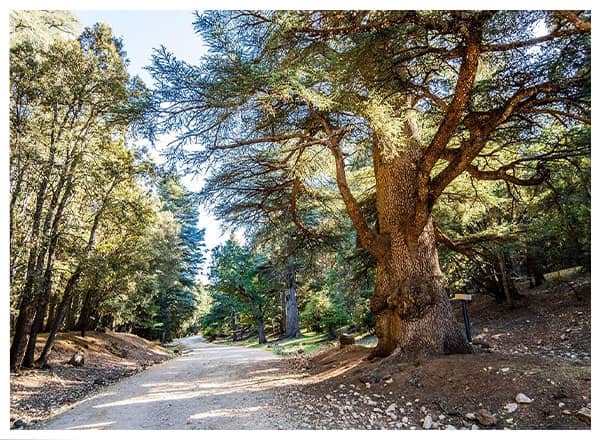
7. Lake Aguelmame Sidi Ali
Nestled at over 2,000 meters above sea level, this high-altitude lake offers a tranquil setting for walking and reflection. Surrounded by pine forests and open meadows, the area is perfect for those seeking solitude and fresh mountain air. It’s also a great spot for birdwatching and star-gazing due to low light pollution.
- Difficulty: Easy to moderate
- Best Time to Visit: Spring to early autumn
- Highlights: Serene landscapes, crisp mountain air, and rich birdlife
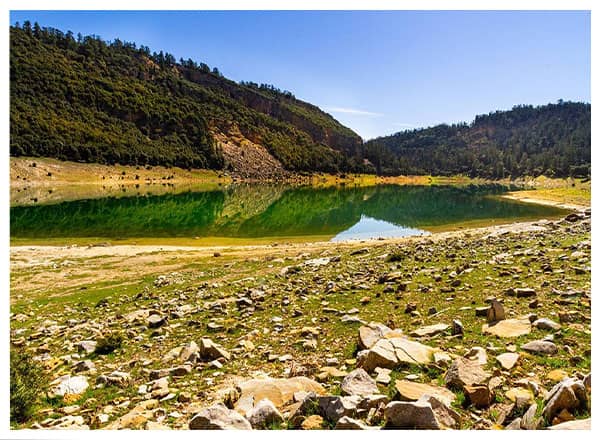
8. Ameln Valley and Jebel Lekst
Based around the small town of Tafraoute, the Ameln Valley is famous for its surreal pink granite rock formations and beautiful almond groves that bloom spectacularly in spring. Hiking here combines moderate climbs with cultural visits to Amazigh (Berber) villages, where traditions remain strong.
- Difficulty: Moderate
- Best Time to Visit: March to May (for almond blossoms) and September to November
- Highlights: Unique granite landscapes, flowering almond trees, and traditional Berber culture
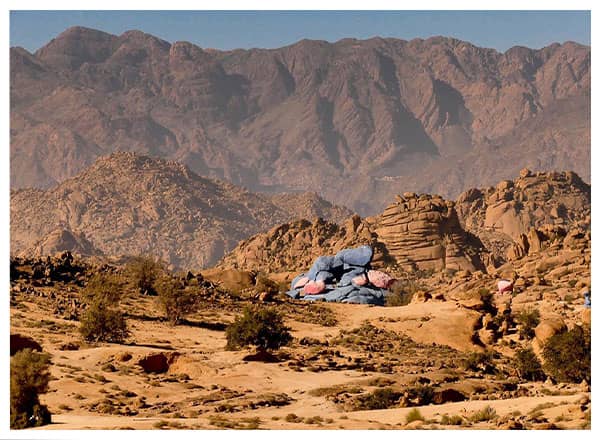
9. Saghro Mountains
Known as the “Mountains of Death” for their ruggedness, the Saghro range marks the transition between the High Atlas and the Sahara Desert. Trails here pass-through moon-like landscapes, deep gorges, and remote villages inhabited by nomads. This is a destination for experienced hikers seeking dramatic desert mountain scenery and authentic cultural encounters.
- Difficulty: Moderate to difficult
- Best Time to Visit: October to April
- Highlights: Stark desert landscapes, ancient petroglyphs, and nomadic life
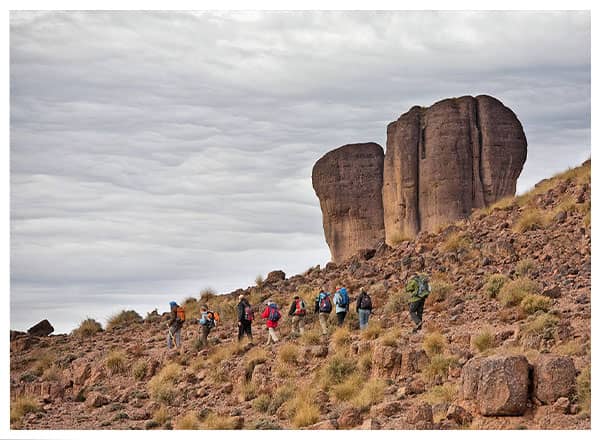
10. Sidi Kaouki to Essaouira
Starting in the laid-back village of Sidi Kaouki, this coastal trek follows sandy beaches, rocky cliffs, and open farmland towards the historic port city of Essaouira. Along the way, hikers can enjoy the sight of camels roaming the beach, seabirds overhead, and occasional nomadic shepherds. This route is ideal for those wanting a peaceful hike with stunning ocean views and the chance to explore quaint coastal communities.
- Difficulty: Easy to moderate
- Best Time to Visit: Spring and autumn (mild weather and fewer tourists)
- Highlights: Coastal cliffs, wild beaches, traditional villages, and vibrant birdlife
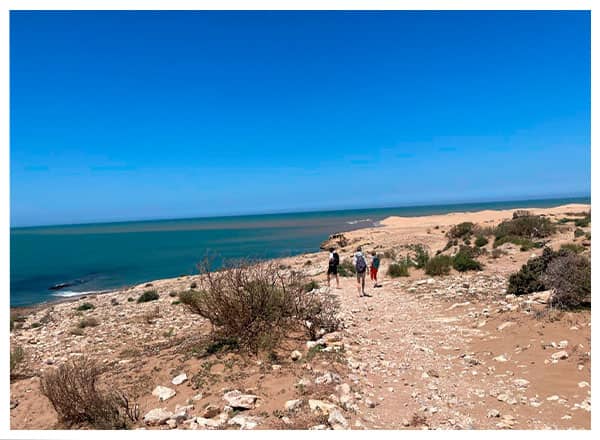
Practical Tips for Hiking in Morocco
Morocco offers incredible hiking experiences, but a little preparation goes a long way to ensure a safe and enjoyable trip. Here are some essential tips for nature lovers planning to explore the country’s diverse trails:
Best Time to Visit
- Atlas Mountains: Late spring (April-June) and early autumn (September-October) offer the best weather mild temperatures and less chance of rain or snow.
- Rif and Middle Atlas: Spring and autumn are ideal; winters can be cold, especially at higher elevations.
- Anti-Atlas and Desert Areas: Avoid summer due to extreme heat; autumn to spring is best.
- Coastal Trails: Year-round mild climate, but spring and autumn provide the most comfortable hiking conditions.
What to Pack
- Sturdy hiking boots with good grip
- Layers of clothing (temperatures can vary greatly between day and night)
- Sun protection: hat, sunscreen, sunglasses
- Reusable water bottles and water purification tablets or filters
- Lightweight rain jacket or windbreaker
- Basic first aid kit and any personal medications
Safety and Local Customs
- Consider hiring a local guide, especially for remote or challenging trails.
- Respect Berber and nomadic communities’ customs and privacy and ask permission before photographing people.
- Stay on marked trails to avoid getting lost and protect fragile environments.
- Inform someone of your route and expected return time if hiking alone.
Environmental Responsibility
- Practice Leave No Trace principles: carry out all trash, avoid disturbing wildlife, and minimize impact on natural habitats.
- Support local businesses by buying food, crafts, or hiring guides from villages you visit.
Conclusion
Morocco’s stunning diversity from towering Atlas peaks and lush cedar forests to rugged desert landscapes and wild Atlantic coastlines makes it a dream destination for hiking enthusiasts and nature lovers. Whether you’re seeking a challenging summit, a peaceful valley walk, or a coastal trek with ocean views, Morocco offers trails to suit every preference and ability.
Beyond the incredible scenery, hiking in Morocco connects you with rich cultural traditions, warm Berber hospitality, and unique wildlife. These journeys invite you to slow down, immerse yourself in nature, and discover a side of Morocco that few tourists see.
So, lace up your hiking boots, choose your trail, and get ready to explore some of the best hiking routes Morocco has to offer. Adventure, culture, and unforgettable landscapes await you.
